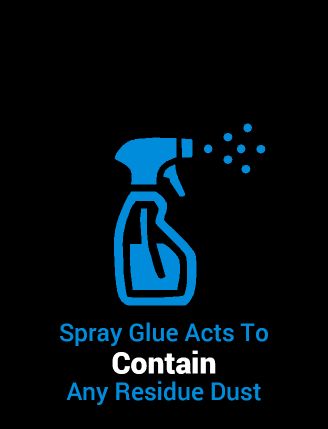Dangers of Asbestos
Asbestos is a health hazard when its fibers are inhaled. Typically, the presence of asbestos does not pose risks unless the materials begin to deteriorate, break or are disturbed until airborne fibers are generated. Asbestos exposure can result in:
Asbestosis: a progressive scar tissue which forms in the lungs and impairs breathing.
Pleural plaques: Are thickened patches of scarred tissue that form on the lung’s pleural lining.
Lung cancer: developed after many years of asbestos exposure, but people with asbestosis are more vulnerable.
Mesothelioma: a form of pleural cancer that covers the lungs, diaphragm and chest lining. It is triggered by several years of asbestos exposure.
Importance of Hiring a Qualified Asbestos Removal Company
While homeowners can lawfully remove asbestos from their homes, it is prudent to always hire licensed professionals to remove asbestos, especially the loosely-bound types. Asbestos abatement professionals have the requisite knowledge, experience and equipment for removing asbestos without causing the release of harmful fibres. When contracted, abatement experts usually inspect homes and collect samples of materials that are suspected to be containing asbestos for laboratory testing. Similarly, asbestos abatement experts Australia usually create abatement plans that protect family members from the dangers of asbestos during removal. Wearing protective gears such as goggles, gloves and respirators, the removal experts ensure that the entire process is handled without the release of fibres. Indeed, hiring asbestos removal experts is a good way of protecting your family from potential risks.
Australia has experienced massive mining and usage of asbestos products over the years, resulting in huge risks and potential exposure to asbestos fibres. Many old houses constructed before the 1980s were built using asbestos cement and other products, and can expose residents to terrible health risks. Therefore, owners of old homes should call asbestos abatement experts to inspect their homes and conduct hazard-free asbestos removal. This is the final step of the asbestos removal process and any dangers must be picked up now prior to somebody being inadvertently exposed.
Common Health Issues
Once asbestos fibres are breathed in, some of these substances remain in the lungs and cause ailments several years later. The following are among the diseases associated with exposure to the material.
1. Lung cancer
Inhalation of large amounts of this toxic substance for a long period may increase one’s chances of developing lung cancer. Although it may take about a decade for the cancer to develop, the disease may spread slowly to the lungs and other vital body organs when the condition is not treated at its initial stage. Generally, the risk of developing cancer is higher among smokers.
2. Malignant mesothelioma
Due to extensive research, this type of cancer that affects the lungs’ outer covering (pleura) has been linked to a person’s long-term exposure to asbestos fibres. In fact, it takes at least 30 to 40 years after an individual’s exposure before the disease may develop. Thus, it is common for patients to remain undiagnosed for decades until the tumour has already spread to the chest wall and lungs.
3. Asbestosis
This ailment pertains to a type of progressive lung disease that develops over time due to inhalation of asbestos fibres for a number of years. Just like malignant mesothelioma, it may take several years before symptoms begin to appear. The fibres that remain in the lungs can cause scarring. Eventually, the lungs will become stiff, until it is no longer capable of functioning. Complications of this disease can lead to tightness in the chest, respiratory failure, bluish tinge on the skin, and death. Unfortunately, there is no treatment for asbestosis.
4. Pleural Disorders
Asbestos can cause pleural plaques or thickened spots of the pleura, as well as widespread scarring on this surface of the lungs. While these patches may not cause any symptoms, patients will have a minimal lung capacity, which may be assessed after they undergo a lung function test.
At present, a vast majority of individuals who suffer from diseases caused by asbestos have been employed in jobs where they frequently inhaled this substance. There are also some people who develop this disease because of the presence of the substance in their home or within their community.
What Clients Like About Us




